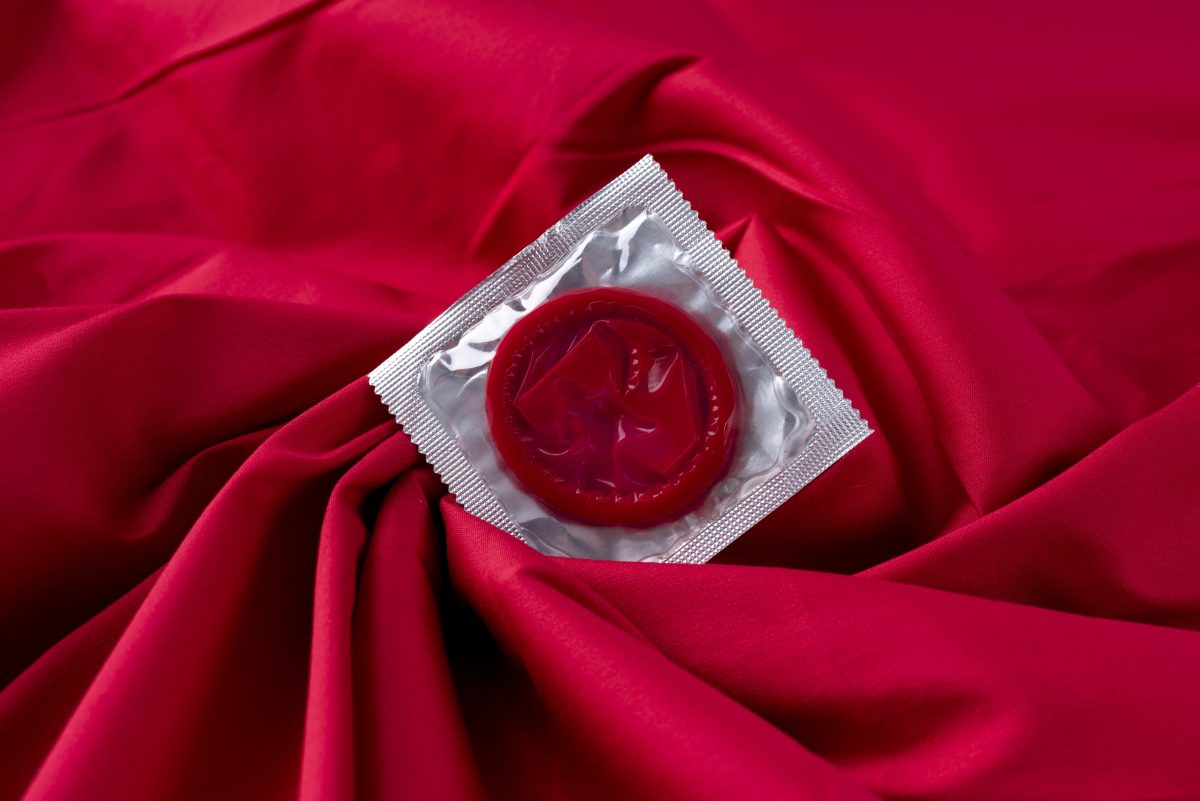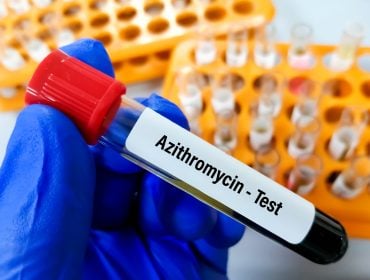Maximizing Protection: The Role of Condoms in HIV Prevention
Condoms play a vital part in HIV prevention. When used with methods like PrEP or when viral loads are undetectable, they offer strong protection. Research finds quality condoms to be virus-proof during laboratory tests.
Experts from the British Association for Sexual Health and HIV argue that consistent use might render this method over 95% effective against HIV transmission. Yet, their real-world efficacy can vary due to how often people follow usage guidelines accurately—making it hard to gauge actual success rates completely.
Understanding Condom Efficacy Against HIV
Condoms, used by millions worldwide to halt the spread of HIV, are effective but not foolproof. They stand as a barrier against this virus and also prevent other sexually transmitted infections alongside unintended pregnancies. With consistent use, their effectiveness soars; yet even occasional use can reduce transmission on a grand scale.
While once rising, rates have stalled with reduced funding despite condoms’ crucial role in earlier HIV prevention efforts that achieved broad reach. Roughly 60% of men in certain surveys claim condom use during high-risk encounters—though self-reports might inflate true figures. Access largely hinges on public-health sectors supported by international funds—an essential factor ensuring availability for those who rely on them.
As studies show substantial efficacy against HIV when utilized properly and consistently, it’s clear: while they don’t guarantee 100-percent protection from HIV—they come impressively close with correct and regular application.
Safe Sex and HIV Prevention
Male condom use is a vital part of the fight against HIV. Its effectiveness hinges on consistent and correct usage every time partners engage in sexual activity. While no prevention method is faultless, the science shows promise; when people use them right at all times, condoms are highly effective in blocking HIV transmission.
To be clear, even with perfect use, condoms can’t achieve 100% protection, there’s always a small chance for failure due to factors like breakage or slippage during intercourse. But despite this tiny risk factor, it’s worth noting that they significantly lower the odds of getting or spreading HIV. People often question: Do condoms work flawlessly?
They do not; however their role is undeniably strong in safeguarding individuals’ health by drastically cutting down risks so long as they’re used reliably and properly each time without exception.
Reducing Risk with Correct Use
Using condoms the right way every time is key to lowering HIV risk. Studies show when used correctly, latex barriers ward off even tiny germs well. But they can’t fully shield against all STDs due to different spread methods, some pass through skin contact not covered by a condom.
For fluids-spread infections like HIV, though, correct use means much less chance of getting sick. For true protection from HIV during sex acts, from start till after climax, a new condom must be on in proper form: rolled out with space at the tip for semen and kept intact without slip-ups or breaks. Mistakes often lead to lesser safety than product flaws do; skipping just once could let disease transfer happen.
By sticking strictly with these steps each time, folks cut down their odds of catching or passing along HIV significantly, not perfect but powerful defense indeed.
Condom Types and Barrier Integrity
Latex condoms are the most effective at preventing HIV. Their tight seal, when used properly, stops the virus from passing through. But there’s no 100% guarantee, it’s crucial to use them right every time.
For those allergic to latex, plastic or synthetic rubber options exist as safe alternatives and can also stop this virus efficiently if handled carefully. Stay away from natural membrane types; these have pores that let viruses in—meaning they won’t protect you against HIV or other STDs. An internal condom gets placed inside body openings for sex.
Made of nitrile, a synthetic material, they shield both partners during intimate moments effectively too. To ensure safety with external condoms: unroll it on a hard penis while pinching out air at its tip before action begins then hold onto its base after finishing up so nothing spills as you pull back gently! Oil-based lubes weaken all kinds but water or silicone-based ones aid in keeping barriers intact throughout your encounter without risk of tearing apart—an important point towards maintaining their integrity until completion.
HIV Transmission Rates Despite Protection
Even with condoms, HIV still transmits at times. They’re strong shields but not perfect. Slips or breaks can happen if they don’t fit right or aren’t used till the end.
Experts tell us that when used perfectly every time, condoms slash HIV risk by 85%. Still, human error creeps in and perfection is rare – some folks may use them wrong or not throughout. This slips the success rate down lower in real life.
Real care boosts protection levels though; it’s like locking your car plus parking under a light – double safety steps matter here too. People must check for tears before using one and pick latex over other types for better defense against viruses as tiny as HIV. Good habits help keep everyone safer from this tough virus that’s still out there even now.
Consistency is Key to Prevention
In the battle against HIV, using condoms stands out as a highly effective defense. Optimal use of male condoms can lead to significant reduction in transmission risk – they don’t guarantee 100 percent prevention but are undoubtedly crucial. For people who consistently employ this method, it becomes a firm barrier against the disease’s spread, creating an environment where safety reigns during intimate moments.
While antiretroviral therapies (ART) for those with HIV boast near-perfect effectiveness when maintained properly—studies cite figures soaring at 100%—condoms still play their part well among preventative measures. The key is unwavering usage; every single encounter should involve protection without fail or exception. Daily Pre-Exposure Prophylaxis has about 99% efficacy with steady adherence and proper levels.
Consistent condom usage remains crucial for comprehensive prevention, offering broader safety than one might initially realize.
Overcoming Common Condom and HIV Misconceptions
Many think that condoms block HIV every time. Yet, no sure shield exists. If you had an STD lately or wish to have a child with an HIV-positive man, know this: Condoms are key.
They cut the risk of catching viruses during sex acts if used right from start to end. They fight off not just HIV but other ills too — like chlamydia and gonorrhea — which PrEP can’t stop on its own. If you need help, clinics are there for you without fail.
Or use the online tool to find doctors skilled in HIV care. Before starting drugs like PrEP, testing free from HIV is vital; health folks will check this first thing. Keep each step top-notch safe by picking smart moves at all times—like sticking with condom use every chance one gets when close moments happen between sheets or wherever love meets.
Regular Screening through STDCheck.com
Regular screening for sexually transmitted diseases (STDs) is a vital step in HIV prevention. STDCheck.com offers confidential testing, often with same-day results. The process starts by ordering a test online then visiting one of their 4,500 labs nationwide; no appointment needed.
This service conducts tests for common infections including HIV, providing quick email alerts if follow-ups are required. People choose this option for its privacy and speed which can be crucial when managing sexual health proactively. Regular checks help detect issues early on—before they contribute to the spread of HIV or lead to more severe health consequences.
Individuals should stay informed about their sexual health status. Services like STDCheck.com provide easy access and reliable reporting to prevent disease transmission.
Enhancing Safety Beyond Condoms
While condoms cut down on HIV risk by up to 95%, they’re not foolproof. Often, folks don’t stick with them every time, messing with how well they work against HIV spread. The truth is harsh; many just use condoms now and then, mostly with casual partners or in paid hook-ups.
Regular couples rarely do – surveys say less than one out of ten women used a condom last time they were with their main guy. Turns out where you stand matters – sex workers are good about it in business but slack off in personal flings. Even when people can get condoms easy enough, using them isn’t automatic across the board — trust and intimacy thoughts pop-up making things tricky.
Male and female rubbers often don’t suit those trying for kids or those put off by the mood-killing interruption. Additionally, women may require their partner’s approval to use the female version, which also tends to be more expensive. Safe sex practices significantly reduce the risk of HIV transmission. Condoms play a vital role in this. They act as barriers, blocking the virus from passing between partners during intimate moments.
By choosing to use condoms consistently and correctly, individuals take proactive steps toward protecting themselves and others from HIV infection. STDCheck offers easy access to tests for peace of mind and promotes safe behaviors that empower people in their sexual health journeys—condoms rank high on this list for effective defense against HIV.
Secure and Confidential
STD testing services
The fastest results possbile - available in 1 to 2 days

Tagged
Categorized As
Author: STD Check Editorial Team
At STDCheck.com, we go to great lengths to ensure quality content. We’re using our own collection of data. It is not bought or made up for “click-bait” purposes. We don’t entice traffic with cheesy graphics or raunchy headlines. Our information is to promote STD testing, educate people, let go of social stigmas, and bring awareness. We also provide a completely confidential atmosphere through private testing. When we produce an article, it is fact-based. We check it with medical advisors that approve it. Our staff consists of doctors and other medical professionals who peer review the content we make available on STDCheck.com. From all over the world, we have sourced the best and the brightest content developers, including medical professionals, marketing engineers, data scientists, content specialists, and media relations.




